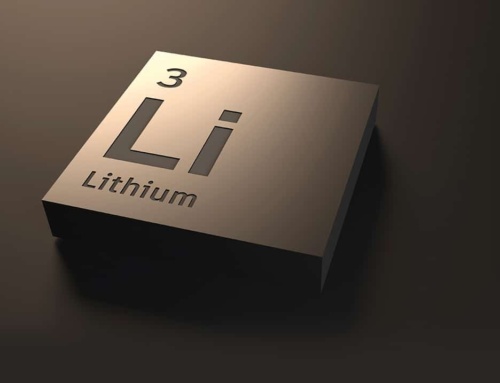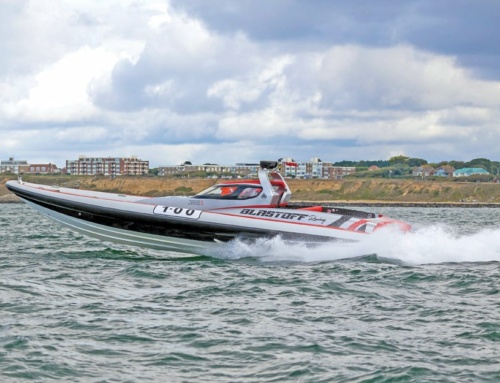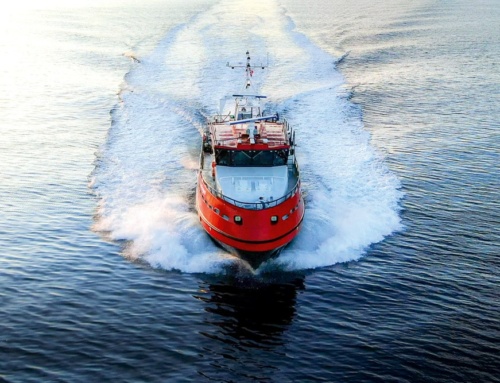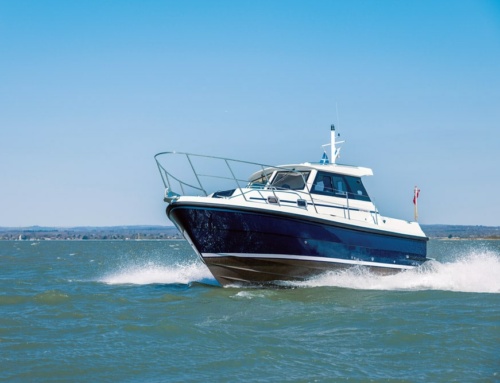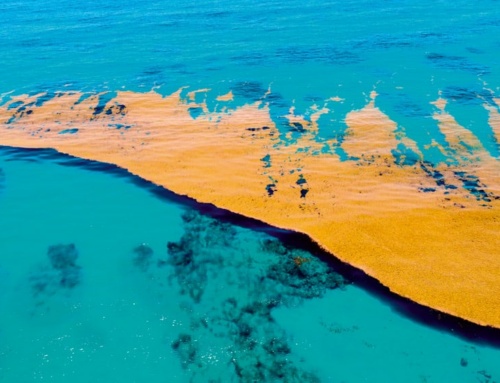- No one material or construction technique has the upper hand in all departments; it simply depends on what you as a buyer want from your boat.
- The same physical properties that make Kevlar and Twaron suitable for bulletproof vests also make boats built from these materials nigh on indestructible.
- Aluminium boats will never suffer from osmosis.
- Craft built from high-tech materials such as carbon fibre hold the promise of lighter and therefore faster and more fuel-efficient boats.
Living in the Material World
Dave Marsh explores the options as he investigates the complex world of boating construction materials…
Celebrated yacht designer L. Francis Herreshoff allegedly described glass fibre (or fibreglass) as ‘frozen snot’. It’s safe to assume that his words were not intended as a compliment. And yet if you own a mainstream production powerboat, the chances are that its hull and deck, along with the majority of its internal stiffening structure, will be constructed from glass fibre.
But why glass fibre? If the immediate answer seems obvious (the ability to mould complex deck shapes), consider just a few of the myriad benefits of the alternatives. Aluminium boats will never suffer from osmosis. Craft built from high-tech materials such as carbon fibre hold the promise of lighter and therefore faster and more fuel-efficient boats. The same physical properties that make Kevlar and Twaron suitable for bulletproof vests also make boats built from these materials nigh on indestructible. Timber is the only completely sustainable building material, so it offers a far more ecologically and environmentally sound way to build a boat. And steel is so immensely strong that it is normally possible to design a steel boat without internal bulkheads – a significant benefit when we consider the ever-increasing levels of internal customisation that boat owners are demanding.
No one material or construction technique has the upper hand in all departments; it simply depends on what you as a buyer want from your boat. In this feature, we aim to examine all the pros and cons, not just the headline-grabbing hyperbole beloved by marketing departments. We’ll also explode some of the long-standing myths.
Glass Fibre
The immediate answer to why we build the majority of our production powerboats out of fibreglass is also the overarching explanation. No other material allows builders to so easily fashion fiendishly complex shapes that are limited only by their designer’s imagination rather than the construction process itself. The limitations imposed by other materials may be less manifest when it comes to constructing simple hull forms, but decks are another matter. Glass fibre’s two other big selling points are that GRP structures can be built using relatively unskilled labour, and that glass fibre construction in its most basic form demands less exacting build standards than most other materials.
However, there are innumerable ways to build a glass fibre boat, and numerous ways in which a builder can elevate the build quality beyond the baseline. Sadly, these dry subjects rarely find their way into the glossy brochures, so as a buyer, what can you look out for or ask about to distinguish the also-rans from the superstars? The majority of us are familiar with the time-honoured GRP construction methods, evidence of which stretches back to the end of the Second World War. So let’s fast forward to the present.
The single most impactive development since WWII has been the adoption of resin infusion. Most big production builders now infuse at least their hulls. And whatever stage they are at now, ever more draconian environmental regulations will almost certainly eventually force all builders to embrace infusion for the manufacture of all their major parts: hulls, decks, internal stiffening structures and tray moulds. In Sweden, for instance, this is already mandatory.
The infusion process involves laying all the dry fibre reinforcement (whether it be chopped strand mat, woven roving, unidirectional or multiaxial) into the gelcoated mould at once. A bag is then stretched over the mould, sealed around its edges and a vacuum applied, which sucks the bag down tightly onto the fibre reinforcement. Resin is then sucked and/or pumped through numerous tubes attached to the bag. If all goes well, the even pressure under the bag distributes the resin uniformly through the glass fibre reinforcement.
It is possible to shoddy infused boats, just as it is possible to construct extremely high-quality glass fibre boats using the time-honoured method of rolling and brushing the resin by hand into the layers of reinforcement. However, get it absolutely right and an infused structure does have the upper hand: the resin is more evenly distributed, the laminate is more tightly compacted and the internal surface finish is superior. Infusion virtually eliminates the output of smelly styrene and other obnoxious VOCs (volatile organic compounds). If the structure is cored (and most topsides are), the vacuum ensures a better bond with the core. Regardless of improved quality, the big plus for builder and owner alike is the considerable weight saving. A conventional hand-laid laminate typically needs 2kg of resin for every 1kg of reinforcement – on an infused boat that 2:1 ratio drops to approximately 1:1, a potential saving of around a third of the boat’s structural weight. Given that this can amount to anything between 30% and 50% of the boat’s overall displacement, that can be a significant saving.
Moulded structural grids represent another significant detail. They can take many forms: anything from a simple set of engine beds to the whole of a boat’s internal stiffening structure. Traditionally, stiffening systems comprised a latticework of foam formers, overlaminated by hand with glass fibre reinforcement. A moulded grid is constructed much like a GRP hull or deck, by laminating glass fibre inside a female mould. The resulting single-piece grid (although sometimes a builder may split a large grid into two or three sections) is then glued into the hull using adhesives, most of which are so strong nowadays that the laminate will fail long before the bond does. The two principal benefits of moulded grids are mutually shared between builder and owner: the grid’s greater dimensional accuracy improves quality control, and the inside of the hull has a beautiful easy-clean finish that lends itself to underfloor storage areas. The main drawback is that it is harder to maintain structural continuity across and along the grid than it is with a conventional stringer system, because the largely hollow intersections of the moulded structure are often discontinuous unless they are bridged afterword.
However, although structural grids are obvious to the eye, and builders often like to trump resin infusion, there are so many hidden things that can have an enormous effect on quality. For instance, did you know that the unsaturated polyesters used in many gelcoats and laminating resins are not actually 100% waterproof? So look for a builder that uses more expensive vinylester resins instead of conventional polyester, or even polyester-vinylester hybrids, which resist moisture ingress far better and have superior physical properties. Some builders use vinylester in the gelcoat alone, others throughout the laminate. If your boat is a polyester one, it’s better that the builder uses isophthalic resins, not orthophthalic, as these higher-strength resins have better adhesion and greater resistance to crazing.
Some things you will never see. For instance, because of its cost, borosilicate E-glass is the most commonly used reinforcement in production powerboats, whereas its rarer counterpart, aluminosilicate S-glass, is stronger because it has a higher silica content and smaller-diameter filaments. Unless your boat is very high tech, you’re unlikely to encounter the king of resins, epoxy, because it is more demanding to work with and damned expensive. That is, unless you own a Grand Banks. This builder’s outwardly unassuming glass fibre hulls are an object lesson in quality. Most builders use coloured gelcoat to provide the necessary colour. Grand Banks laminate their hulls instead with a clear vinylester gelcoat so they can inspect the hull for minute imperfections, and correct them if necessary. They then apply three coats of epoxy (easily the toughest and most waterproof resin of all) and in contrasting colours too, so the painters can guarantee 100% coverage every time. Clever, eh?
If this seems like massive overkill, it’s worth knowing that after a year’s immersion, a non-gelcoated laminate can lose a third of its interlaminar shear strength. There again, builders of conventional polyester boats quite rightly point out that osmosis is far less prevalent nowadays, and that the world’s boatyards are not awash with soggy new boats.
Which brings us neatly onto the elephant in the room – GRP’s longevity and its associated recycling. Currently, only Japan and Norway have any credible boat-recycling programme, and at some stage the world’s environmental legislators are going to notice that glass fibre boats, soggy or otherwise, are piling up. Glass fibre can be chopped and ground and used in, for example, road resurfacing. But it is a hazardous process that involves problems with fine dust and the risk of spontaneous combustion – which also makes incineration tricky. In truth, the end-of-life programmes that the world’s cars are subject to will probably spill over into our boating world at some stage, and this will doubtless make our glass fibre boats more expensive.
Aluminium
Aluminium is possibly the most underrated of all the principal boatbuilding materials. This is most likely because too much mythology still clings to aluminium boats. Allegedly, they are relatively expensive to build. Well, not according to XO Boats. This Scandinavian builder has proved that it’s possible to build small, good-quality aluminium hulls for a reasonable price. And the economics only get easier as the boat size increases and the cost of the structure decreases relative to the overall build cost.
Myth number two: they corrode easily – in fact, so enthusiastically that they make sacrificial anodes out of aluminium. Well, yes, but the alloy in those anodes typically contains a little iron plus around 5% zinc. In contrast, the 5083 marine-grade alloy that most boatbuilders utilise has tremendous resistance to corrosion, thanks to a very different composition that includes a smattering of manganese, chromium and silicon. Let’s not forget that many of the world’s biggest megayachts are constructed from aluminium alloy, and billionaires don’t normally invest in naturally dissolving assets.
Also, like stainless steel, aluminium has an invaluable self-healing property. In the unlikely event that you bungle your mooring manoeuvres and scratch the paint all the way through to the alloy shell, the oxygen in the water or the atmosphere quickly combines with the exposed aluminium to form a protective skin of aluminium oxide. So although aluminium can suffer from galvanic corrosion (sterndrive legs need particular care), this self-healing property normally ensures that the alloy has a poorer-than-expected electrical contact with the water, and hence a weaker connection with the more cathodic underwater metals on the boat (e.g. the stainless prop shafts) that could induce galvanic corrosion. So effective is this restorative skin that some owners choose to leave their boats completely unpainted except for the antifouling, preferring instead the zero-maintenance finish of their bare aluminium shells.
I cannot be the only one who expected light, fast, thin-skinned metal boats such as those from Sealegs or XO Boats to be noisy. But preconception is a dangerous thing. In reality, the worst noises I’ve experienced on any of the five aluminium-hulled XO boats I’ve driven to date have been dull thuds from wave impacts, on a par with the quieter foam or balsa-cored glass fibre boats I’ve tested. And that includes several 40-knot-plus test runs in choppy conditions that involved getting the props clear of the water, not just the hull!
That deals with the myths – but what about aluminium’s positive advantages over other materials? Aluminium is an extremely tough material, yet like steel it is potentially quite stretchy. A severe impact might cause glass fibre to fracture and tear, whereas marine-grade aluminium can typically elongate by about 10% before it ruptures, so it’s difficult to fatally hole an alloy boat. If you are unfortunate enough to encounter an argumentative submerged object at speed, alloy is relatively easy to repair, either by knocking out smaller dents or by welding in new plate patches. Neither process requires the repairer to bother much about temperature and humidity, as GRP does.
In hot climates, dark-coloured GRP hulls often suffer from print-through, caused by the long-term heat-induced shrinkage of the exterior gelcoat and resin, which contracts down onto the fibre reinforcement and exposes the weave in the glass fibre fabric. It’s commonly known as the ‘orange peel effect’. However, even the blackest of alloy hulls are safe from this. And from gelcoat crazing. And osmosis. And delamination. In short, alloy boats are extremely durable and low-maintenance beasts. Aluminium alloy is also the easiest and cheapest of the major boatbuilding materials to recycle. Finally, if your aluminium boat ever catches fire, it’s unlikely to swiftly burn down to the waterline, as glass fibre boats can do. Still, here’s hoping that this benefit remains a hypothetical one.
High Tech
Elling construct their hulls from Twaron, an almost implausibly tough material that makes their transatlantic crossing boats all but unbreakable. Delta’s boats achieve their impressive fuel consumption by building carbon epoxy composite boats that weigh far less than their conventional GRP counterparts. So, given that high-tech construction has been with us for decades now, why don’t more of our production motor boat builders utilise at least some of the usual high-tech cast of characters – Kevlar, carbon, Nomex honeycomb, epoxy and Twaron, for example – to give us better boats? The following explanation is simplistic, but it demonstrates why we don’t see more mainstream high-tech powerboats. If money is no object, then of course, high-tech construction will give you a boat that is stronger and stiffer, lighter and therefore faster and more fuel-efficient, and yet as tough as its steel counterparts. For one-off projects, it cannot be bettered.
However, let’s say that an established boatbuilder wants to build a modest production run of small, fast speedboats. If he wants the boat to go faster, it’s immeasurably easier and cheaper to stick a 350hp outboard on the back instead of a 250hp than it is to pay for the far more expensive materials, find the more highly skilled labour to build the carbon epoxy composite boat, build an oven to heat-cure the structure in (essential to take full advantage of the superior materials) and have the new structure RCD approved.
At the other end of the scale, a big comfy cruiser presents the builder with a different dilemma. Most mainstream boatbuilders have either adopted resin infusion or are in the process of doing so, and that single act has already dramatically cut structural weight. However, our comfy cruisers have been piling on the pounds in the form of decadent luxuries such as stabilisers, monster TVs and ice makers, so when the weight-saving effect of resin infusion is factored in, the percentage of a boat’s overall weight represented by the structure plummets. Moving from that resin-infused point to full high-tech construction to reduce a boat’s constructional weight by, say, a further 35%, when that structure now only represents roughly a third of the boat’s overall displacement, rarely makes economic sense, at least to the accountants. Also, builders need to be mindful that carbon boats are extremely stiff and their thin shells can be comparatively noisy – qualities at odds with comfy cruising.
Steel
Immense strength is sometimes seen as steel’s only noteworthy benefit, but in truth it has many talents. Although considerably heavier than aluminium, steel shares many of its counterpart’s advantages, such as zero osmosis or star crazing. It resists rupture extremely well, and it is easy to recycle. Like aluminium, steel’s great strength gives designers tremendous scope to customise their interior layouts, because they can dispense with the restrictive structural bulkheads that are normally necessary on equivalent glass fibre boats. If that currently seems like a minor consideration for the sort of boats that appear in PBR, the trend for mild customisation on ever smaller boats is only ever going to intensify.
Unusually strong and rigid steel or alloy structures are good for other reasons. Mechanisms designed with exacting tolerances such as multi-part sliding doors and big pneumatically sealed sunroofs are less likely to have long-term problems if they are built into a structure that has practically no discernible movement. Deck gear subjected to high cyclical loading such as cleats and guard rails that would have to be through-bolted to a fibreglass boat can simply be welded to the main structure, eliminating potential weak spots such as the bolt holes. That same elevated rigidity also makes steel and aluminium boats very quiet. Fibreglass boats invariably flex more in rough conditions, and that often results in difficult-to-trace squeaks emanating from the interfaces between the complex internal GRP mouldings and the furniture. I’m still waiting to hear my first squeak from a metal boat.
Dutch boatbuilders in particular such as Linssen have proved that production-built steel boats can be very reasonably priced. This is largely because these builders have fully exploited the interlinked advantages of CAD (computer-aided design) and CAM (computer-aided manufacturing) to minimise their production costs. Weight is steel’s Achilles heel. It is possible to build hybrid boats with steel hulls and GRP superstructures that are light enough to allow them to plane, but it’s far from easy. And although the combination of skilled craftsman and good design means that steel superstructures can be almost as curvy as glass fibre ones, if you fall against a steel deck on a cold winter’s day, boy, does it hurt!
Modern epoxy paint systems to all intents and purposes eliminated the problem of rust many years ago, and an epoxy system will typically retain its colour fastness better than a gelcoated colour. Orange peel is not a problem, but in hot climates a dark-coloured steel shell can get extremely hot, and in very cold climates a steel hull will need comparatively more insulation. On comfy cruisers, many builders deal with both issues, and improve sound insulation too, simply by spraying a thick layer of foam onto the inside of the metal shell. Messy but effective.
Wood
Rare as it may be as a material for building production boats, it would be a dereliction of duty not to include wood, as it has its rivals beaten in so many departments. Given a free hand and unlimited funds, almost any boat I designed – high-speed RIBs included – would comprise a western red cedar core sheathed with mahogany and then encapsulated with thin Kevlar-carbon-epoxy skins inside and out.
Wood has the best thermal insulation properties (ergo, warmer in winter and cooler in summer) and the best natural sound absorption properties. It is also excellent at damping vibrations. All three properties combine to provide the most naturally comfortable boats. Thanks to its stringy cellular structure, wood’s resistance to shock loading and to long-term fatigue is remarkable, certainly far better than aluminium and steel, in part because it has such a good memory – the ability to deform and then return to its original shape without exceeding its elastic limit. Wood also exhibits impressive strength and stiffness relative to its weight; only a corresponding carbon boat would weigh less.
As boaters, we are innately conflicted and tormented when it comes to ecological issues. Or at least, we should be. There’s no avoiding the fact that the engines that power our hobby produce more unburnt hydrocarbons and harmful particulates, and nitrous and sulphur oxides, than an alternative aquatic pastime like, say, snorkelling. Build your boat with wood, though, and the material locks away a small amount of carbon. And while steel and aluminium are easy to recycle, just like the oil-based polyester products that make up such a large percentage of our GRP boats, they are finite. In stark contrast, properly managed, timber is the only endlessly renewable resource. Did I mention that wood is also the most romantic material to build a boat with?


